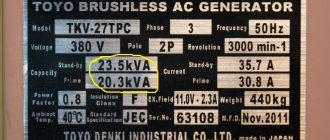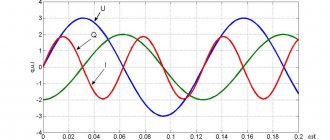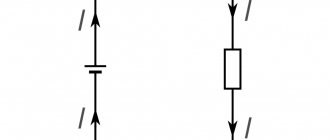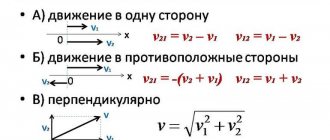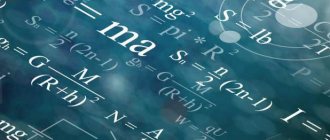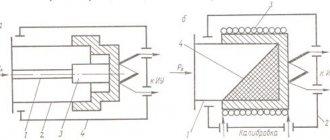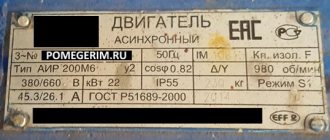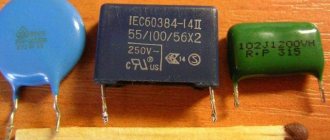The basic units for measuring the power of a motor or any electrical appliance are watts (W) or kilowatts (kW) . However, in addition to this, in practice, an outdated non-system unit of power measurement is very often used - horsepower (hp) .
The main inconvenience of “horses” is that this unit of measurement is not a metric unit of measurement, so converting kilowatts to horsepower is quite inconvenient. Fortunately, today we have our online calculator, which very quickly converts one unit of measurement to another.
How to use an online calculator
Converting kilowatts to horsepower using a calculator is done as follows:
- At the top left , select metric units - watts or kilowatts.
- From below, select the type of “horses” - metric, English or electric (in practice, metric ones are most often used).
- At the top, enter the number in the appropriate cell: if you need to convert kW to hp, enter the number in the left cell, if vice versa, enter the number in the right cell.
- To enter fractional numbers, use the comma (“,”) separator character.
Why 0.735 kW
1 l. With. approximately equal to the value of 75 kgf/m/s - this is an indicator of the force required to lift a load weighing 75 kg to a height of 1 m in 1 second. Different countries use different types of this unit with different meanings:
- metric = 0.735 kW (used in Europe, used in standard conversion from kW to hp);
- mechanical = 0.7457 kW (previously used in England and English-speaking countries, almost out of use);
- electric = 0.746 kW (used for marking electric motors);
- boiler = 9.8 kW (used in the USA in the energy sector and industry);
- hydraulic = 0.7457.
In Russia, the European, called metric horsepower is used, equal to 0.735 kW. It has been formally withdrawn from use, but continues to be used in calculating taxes.
Table for converting hp to kW
Kilowatts can be converted into horsepower using special tables. Below is a table that is adapted to the needs of calculating transport tax:
| Type of horses | Metric | English | Electrical |
| 1 | 0,735 | 0,745 | 0,746 |
| 100 | 73,5 | 74,5 | 74,6 |
| 125 | 91,86 | 93,13 | 93,25 |
| 150 | 110,25 | 111,75 | 111,9 |
| 175 | 128,63 | 130,38 | 130,55 |
| 200 | 147,00 | 149,00 | 149,20 |
| 225 | 165,38 | 167,63 | 167,85 |
| 250 | 183,75 | 186,25 | 186,50 |
FAQ
How many kilowatts are in one horsepower?
One metric horsepower is equal to 0.735 kilowatts (745.7 watts) when calculating engine power in kilowatts. How many kW are in 1 hp? calculated using the formula: power in kilowatts divided by a factor of 1.36.
How many hp in kW?
To convert horsepower to the kilowatt unit, you need to multiply its value by 0.735.
How much is 5 hp in kW?
According to metric calculus, where the ratio of 1kW is equal to 1.359 hp. - 5 horsepower is approximately equal to 3.68 kilowatts of power. If the calculation is carried out with an electric motor, then 5 hp will be 3.73 kW, because When operating an electric motor, the ratio should be used, where 1 kW = 1.34048 hp.
How is engine power measured?
, watts/kilowatts are most often , and horses are used only in one area - calculating the power of a car engine. The thing is that in Russia almost all car owners are required to pay a transport tax, and its size directly depends on the number of “horses” of the engine.
Also note that in practice there are three “horses” - metric, English and electric. At first glance, they may seem to be interchangeable units of measurement, since they differ only slightly from each other. However, this is not entirely true - when calculating large engines, small differences can lead to a serious error, which will lead to incorrect calculation of transport tax.
Let's consider when you need to use one or another horse for calculations:
- Metrics are the basic units for measuring engine power, as they are the most commonly used in practice.
- English - used to calculate the power of cars that are manufactured in some English, American, Canadian, Australian and New Zealand factories.
- Electric – needed to calculate the power of a car with an electric and combined engine.
Instruments for measuring engine power
For calculations, a special device is used called a dynamometer , which is connected directly to the car engine. To determine the strength of the engine, the car is placed on a special platform, and then the engine is idled with a connected dynamometer. Based on the measurement of certain technical indicators (acceleration, acceleration speed, stability, etc. ), during acceleration, the dynamometer determines the total power, and the results are displayed on a digital or analog screen.
Also today there are completely electronic dynamometers that can be connected to a computer - information processing in this case is carried out using special programs that determine the exact power of the engine. Also note that there are two indicators of engine power - net power and gross power.
Let's look at how they differ and which of these indicators is more reliable:
- Gross power - this indicator is measured when accelerating a “naked” car (that is, without a muffler, secondary shock absorbers and other auxiliary parts).
- Net power - this indicator is measured when accelerating a “loaded” car, taking into account all the necessary parts that are needed for a comfortable ride.
Please note that when determining transport tax, it is necessary to determine exactly the “loaded” net power. The thing is that gross power is usually 10-20% higher than the net figure (after all, the car does not have to “accelerate” additional important parts in this case). This trick is often used by unscrupulous manufacturers and marketers who want to present their car in a better light, which must be remembered when taking measurements.
What is horsepower [HP]
The unit of measurement for drugs was invented by James Watt at the end of the 18th century. It is assumed that this name is due to the fact that Watt wanted to prove the superiority of his steam engines over the more traditional draft labor force - over horses . A popular legend says that after the creation of the first prototypes, one of the steam engines was bought by a local brewer who needed the engine to operate a water pump. During the test, the brewer compared the steam engine with his strongest horse - and it turned out that the horse was 1.38 times weaker than the steam engine (and 1 kilowatt is exactly 1.38 hp) .
What are kilowatts [kW]
At the beginning of the 19th century, horsepower began to be used to refer to the maximum power that one strong horse could produce. However, some engineers and scientists began to use not abstract horses as a starting point, but rather the very concrete first Watt of fixed power. This practice took hold at the end of the 19th century the watt was recognized as a unit of power . However, not all states recognized the new units, so today horsepower is still used as an auxiliary or main unit of power.
How to find out the horsepower of a car
There is another way to calculate horses. Almost any large service station has a special installation that can easily determine how much horsepower is in the car. The car is lifted onto the platform, secured, and the accelerator pedal is pressed all the way. In a few minutes the computer will calculate the value.
It is customary to distinguish between 2 measurement systems: domestic and European. Both equate hp. to 75 kg x m/s.
Conversion table from Kilowatt to Horsepower
| Kilowatt | 1 | 5 | 10 | 25 | 50 | 100 | 250 | 500 |
| Horsepower | 1.36 | 6.798 | 13.596 | 33.99 | 67.981 | 135.962 | 339.905 | 679.81 |
Metric system
Formula for converting kW to hp.
Pl.s. = PkW ⋅ 1000 / 735.49875
Power P in horsepower (hp) equals power P in kilowatts (kW) multiplied by 1000 and divided by 735.49875 (since 1 hp = 735.49875 W, 1 kW = 1000 W).
English system
Formula for converting kW to hp.
Pl.s. = PkW ⋅ 1000 / 745.69988
Power P in horsepower (hp) is equal to power P in kilowatts (kW) multiplied by 1000 and divided by 745.69988 (since 1 hp = 745.69988 W, 1 kW = 1000 W).
How to convert horsepower to kW
There are several options for the mutual translation of these units of measurement:
- Online calculators. The easiest and fastest way. Requires constant access to the Internet.
- Correspondence tables. Contains the most frequently occurring values and is always at hand.
- Translation formulas. Knowing the exact correspondence of units, you can quickly convert one number to another and vice versa.
In practice, the following numerical values are used:
- 1 l. With. = 0.735 kW;
- 1 kW = 1.36 l. With.
The second correspondence is most often used: numbers greater than one are easier to work with. To carry out calculations, the kW indicator is multiplied by this coefficient. The calculation looks like this:
88 kW x 1.36 = 119.68 = 120 l. With.
The reverse calculation - conversion from "horses" to kW - is carried out by division:
150 l. With. / 1.36 = 110.29 = 110 kW.
For ease of calculation, the value is 1.36 liters. With. often rounded to 1.4. This calculation gives an error, but for the general conversion of kilowatts into horsepower with an approximate estimate of power, this is enough.
What is horsepower and how did it come about?
Horsepower (Russian: English : hp , German: PS , French: CV ) is a non-systemic unit of power, first described by James Watt from Scotland in the 17th century.
He developed the first steam installation and, to demonstrate that his apparatus was capable of replacing more than one horse, he introduced such a parameter as horsepower.
According to the inventor's observations, an ordinary horse is capable of lifting luggage weighing about 75 kg from a shaft for a long period of time at a constant speed of 1 m/s.
He calculated the hp figure. as a load weighing 250 kilograms, which can lift a horse to a height of 30 centimeters in 1 second, that is, 1 hp = 75 kgm/s or 735.499 watts.
The history of horsepower
At the end of the 18th century, English miners used the Newcomen steam plant to pump water out of mines. Physicist Watt decided to improve this machine and increase its performance. Working on it, he made it 4 times more effective. In addition to the fact that he made the piston stroke in both directions, a mechanism was developed for transmitting movement from the piston to the rocker arm.
This is how a steam engine was created, converting the movement of a translational piston into rotation. This produced a whole revolution and opened up opportunities to apply it in various fields. The company of Watt and his partner Bolton produced 496 devices by 1800. Only less than a quarter of them were used as pumps. The need to sell their products has necessitated the determination of their technical characteristics. The main indicator that buyers had to pay attention to was the power of the heat engine.
When James Watt wanted to show how many horses a steam engine could replace at work, he coined the term “horsepower” - l. With. The Scottish inventor decided to come up with this standard after one incident. It was said that in 1789, a brewer, having bought an engine, compared the efficiency of its work in turning a water pump with the similar work of a strong horse. Trying to convict James of the failure of his invention, the brewer forced one of his strong and hardy horses to work hard. The engineer accepted the challenge and slightly exceeded the brewer's stated "technical specification" for one horse.
How are HP measured? in Russia and other countries
At the moment, there are several types of units with this name all over the world.
Main varieties:
- metric equal to 735.4988 W;
- mechanical, equal to 745.699871582 W;
- indicator, equal to 745.6998715822 W;
- electric, equal to 746 W;
- boiler equal to 9809.5 W.
The official international unit for calculating power is the Watt.
In many European countries, the so-called “metric” horsepower is used, calculated as the power spent on lifting an object weighing 75 kg at the same speed with a standard acceleration g = 9.80665 m/s².
Its value is considered equal to 75 kgf m/s or 735.49875 W.
In the UK and the United States of America, in the auto industry, horsepower is considered to be equal to 745.6998815 watts or 1.0138696789 metric units. In America, in addition to metric, boiler and electric varieties of l are used. With.
At the moment, in the Russian Federation the term “horsepower” has been nominally withdrawn from official circulation, although it is used to calculate transport tax and compulsory motor liability insurance. In Russia, this indicator is understood as the metric variety.
Reference. To calculate the power of an internal combustion engine in watts, a metric value is used: 1 kW = 1.3596 hp. or 1 hp = 0.73549875 kW.
